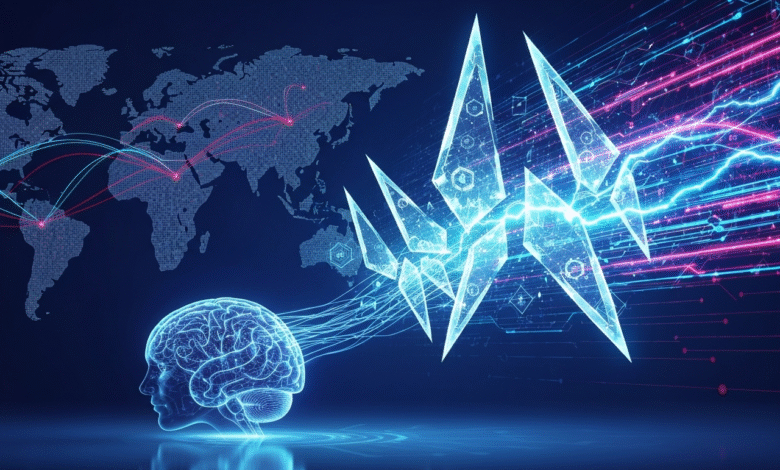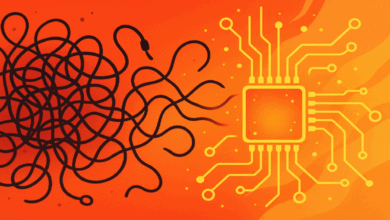Top Cybersecurity Threats to Watch in 2025

▼ Summary
– The global threat landscape is rapidly evolving due to AI integration, quantum computing, geopolitical shifts, and new regulations, requiring organizations to strengthen cyber resilience.
– AI-driven attacks are becoming more autonomous and sophisticated, enabling large-scale spear-phishing, adaptive malware, and social engineering that bypass traditional defenses.
– Quantum computing poses a critical risk to current cryptographic systems, potentially breaking encryption like RSA and ECC, which could empower ransomware and “harvest now, decrypt later” attacks.
– Geopolitical cyber threats are intensifying, with state-sponsored actors using hybrid warfare tactics to target critical infrastructure, supply chains, and private-sector organizations.
– Human factors remain a major vulnerability, necessitating continuous security training, a strong security culture, and mental health support to combat phishing, insider threats, and employee burnout.
Looking ahead to 2025, the cybersecurity environment is set to become significantly more complex and dangerous. Organizations worldwide must prepare for a new wave of sophisticated threats driven by artificial intelligence, the looming potential of quantum computing, and increasingly aggressive geopolitical cyber campaigns. Understanding these emerging risks is the first step toward building the robust, adaptive defenses necessary for survival and success in this new digital era.
AI-Driven Attacks and Autonomous Threat Agents
The weaponization of artificial intelligence is fundamentally altering the cyber battlefield. Attackers now use generative AI, deep learning, and reinforcement algorithms to automate their operations. This allows them to craft highly personalized phishing emails, develop malware that adapts to its environment, and execute campaigns on a massive scale previously thought impossible.
These AI-powered tools act as autonomous threat agents, capable of scanning networks for weaknesses, evading security controls, and launching exploits with incredible speed. They learn from their mistakes in real-time, constantly refining their methods and drastically shrinking the time defenders have to identify and neutralize an attack.
The proliferation of convincing deepfakes and AI-driven social engineering presents a monumental challenge. Traditional security awareness training is struggling to keep up with the realism of these new tactics. Furthermore, the democratization of AI tools means that even low-skilled criminals can now launch high-level attacks. As AI systems themselves become targets, adversaries are developing ways to poison the data these systems learn from, manipulate their outputs, and dismantle AI-powered security, accelerating a high-stakes technological arms race.
Quantum Computing Threats and Cryptographic Risks
The arrival of quantum computing represents a paradigm shift with profound implications for digital security. These machines process information in ways that classical computers cannot, solving certain complex problems at breathtaking speeds. While promising for scientific advancement, this power poses an existential threat to the cryptographic algorithms that currently protect our most sensitive data.
Modern encryption, including widely used systems like RSA and ECC, relies on mathematical problems that are incredibly difficult for today’s computers to solve. However, a sufficiently advanced quantum computer running Shor’s algorithm could crack these codes with ease, rendering much of our current data protection obsolete.
This vulnerability has given rise to “harvest now, decrypt later” attacks. In these campaigns, state-sponsored actors steal encrypted data today—such as government communications, intellectual property, or financial records—and store it securely. They anticipate that within a few years, quantum computers will be available to decrypt this information, the value of which may last for decades. These are not random breaches but long-term, strategic espionage operations designed to harvest intelligence for future advantage.
Geopolitical Cyber Threats and Hybrid Warfare
Cyberspace has become a primary domain for state-level conflict, espionage, and disruption. We are witnessing an intensification of cyber operations integrated with traditional military and economic tactics, a strategy known as hybrid warfare. Critical national infrastructure—including energy grids, financial systems, and healthcare networks—is increasingly in the crosshairs of state-sponsored actors.
Attribution for these attacks is becoming more difficult as nations use proxy groups and advanced obfuscation techniques. The lines between cybercrime, espionage, and acts of war are blurring, creating a volatile and unpredictable threat environment for both public and private sector organizations globally.
Regulatory and Cybersecurity Governance
The regulatory landscape is struggling to keep pace with the rapid evolution of cyber threats. A complex patchwork of international, regional, and industry-specific regulations is emerging, creating a significant compliance burden for global organizations. Enforcement is becoming more aggressive, with regulators imposing heavy fines and, in some cases, holding corporate leaders personally accountable for security failures.
Future regulations are expected to become more prescriptive, particularly concerning artificial intelligence, data privacy, and quantum readiness. Organizations must therefore view governance not as a box-ticking exercise but as a strategic imperative, integrating compliance directly into their enterprise risk management and business continuity planning.
Human Resilience at the Heart of Cybersecurity Strategy
Despite all technological advancements, the human element remains the most critical and vulnerable component in any security program. Phishing, social engineering, and simple human error continue to be the root cause of a vast majority of successful breaches. The challenges of remote work, employee burnout, and a global cybersecurity skills shortage only amplify this risk.
Building a resilient human firewall requires more than annual training videos. It demands fostering a pervasive culture of security where every employee feels personally responsible and empowered to act as a first line of defense. This involves continuous, engaging awareness programs, leadership that champions security from the top, and a work environment that supports mental well-being to combat security fatigue.
Future Outlook: Building Cyber Resilience
Surviving the next few years will require a fundamental shift in mindset. Organizations can no longer afford a reactive, compliance-focused approach to cybersecurity. Instead, they must adopt a posture of continuous anticipation and adaptation. This means investing in agile security architectures, advanced threat intelligence, and quantum-resistant cryptography today.
True cyber resilience is achieved by weaving security into the very fabric of the organization. It involves empowering people, streamlining processes, and leveraging technology not just as a shield, but as an enabler of innovation and trust. The organizations that will thrive are those that transform cybersecurity from a technical cost center into a core strategic advantage, positioning themselves to navigate the uncertainties of the digital future with confidence.
(Source: ITWire Australia)





